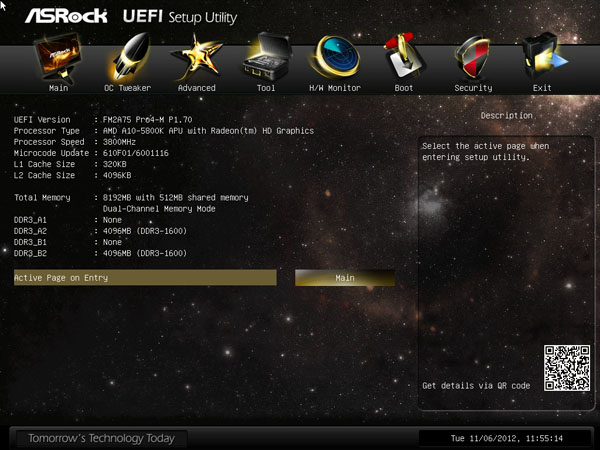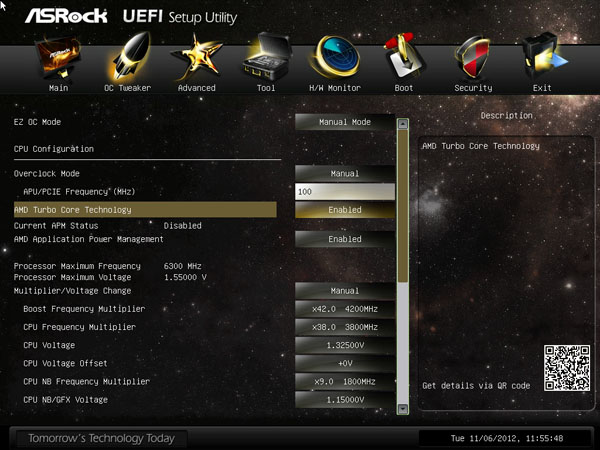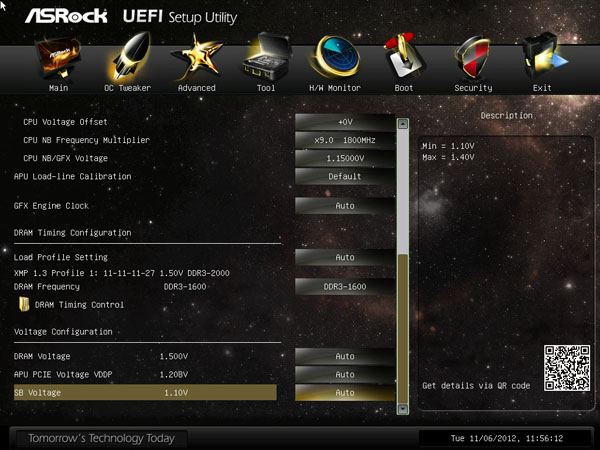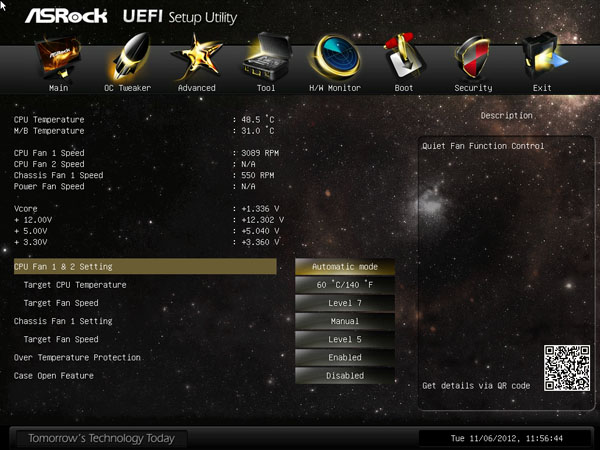BIOS
ASRock's spick-and-span UEFI BIOS is a welcome addition to a budget board, and we rank it in the top three of all BIOSes. The main sections are clearly headlined in the top row, configuration is simple and information is easy to read.
The BIOS belies the mid-range status of the A75 chipset. Users overclocking non-K-series APUs can raise the host clock from 100MHz to 136MHz, components permitting, while CPU voltage tops out at a reasonable 1.55V (1.325V default), GPU voltage at 1.55V (1.15V default), DRAM 1.80V (1.50V), SB 1.40V (1.10V), and APU PCIe to 1.563V (1.208V). In short, the maximum figures are plentiful, especially if you further use the CPU offset voltage option to really bake the chip.
The APU graphics speed increases aren't so granular, rising in circa-50MHz steps above the default 800MHz on an A10-5800K. The reason for this rests with how the board implements various speed dividers. Similarly, DDR3 memory ranges from 800MHz to 2,400MHz, in 266MHz steps, though you'd be lucky to push an APU's on-board controller up to the highest figure.
The number of tweakable options is enough for ASRock to offer a means by which to save the current BIOS profile to one of three slots, and an auto-overclocking mode attempts to make it easy for users to push the components. For example, the board has pre-configured CPU frequency presets (depending upon the APU) and invoking, say, a speed of 4,300MHz has the effect of automatically increasing certain voltages.
One area in which a few manufacturers consistently fall down is with respect to the quality of fan-control settings. A75 Pro4-M's are good, enabling the speeds to be set against temperature or manually to a certain level. As silly as this sounds, they work just as advertised, which is more than we can say for some of the competition.
Most motherboard manufacturers tend to replicate the BIOS in a Windows environment. ASRock is no different in this regard, with the Extreme Tuning Utility being a good proxy for the pre-OS BIOS. All in all, a good showing here.













